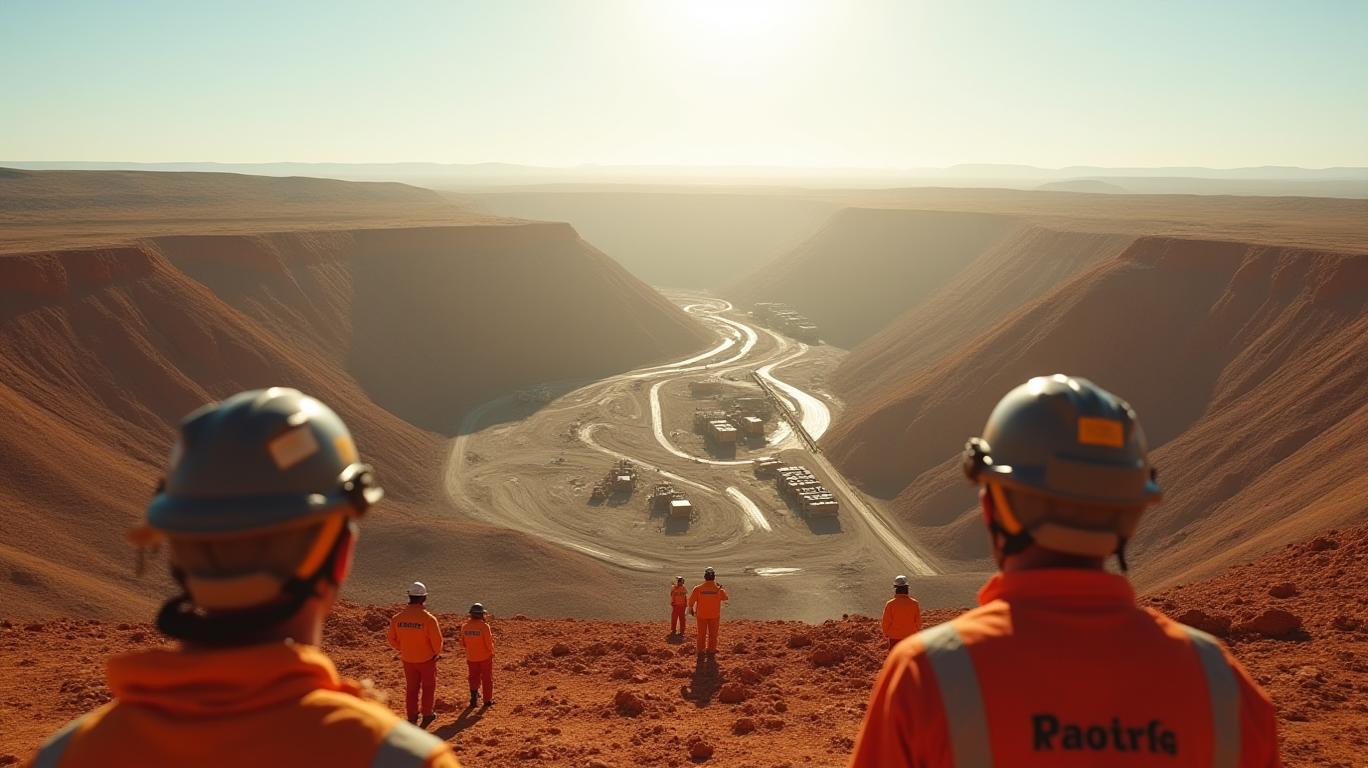AInvest Newsletter
Daily stocks & crypto headlines, free to your inbox
Vista Gold Corp. reported its first-quarter 2025 financial results, revealing a deeper net loss compared to the prior year but emphasizing progress on its flagship Mt Todd gold project in Australia. While the company’s financial position remains constrained by losses and modest cash reserves, the quarter underscored its strategic focus on advancing a lower-cost, high-potential development plan for Mt Todd—a project that could redefine its value proposition in the gold sector.
Vista reported a consolidated net loss of $2.7 million for Q1 2025, marking a 145% increase from the $1.1 million loss in Q1 2024. The expanded deficit reflects ongoing exploration and development expenses tied to the Mt Todd project. Cash and equivalents dipped to $15.0 million at quarter-end, down from $16.9 million at year-end 2024, though the company maintained a debt-free balance sheet.
Investors will monitor whether cash burn can be managed as the feasibility study nears completion. With $15 million in the bank, Vista’s runway depends on the timeline for securing financing or a partner for Mt Todd—a critical variable given the project’s $400 million capex target.
The quarter’s narrative centered on Mt Todd, where Vista is refining its development blueprint to reduce upfront costs while preserving production targets. Key highlights include:
- Capex Reduction: Initial capital expenditure slashed by 60% to $400 million, down from prior estimates, by focusing on a 15,000-tonne-per-day (tpd) operation.
- Grade Optimization: Raising the cut-off grade to 1 gram of gold per tonne to prioritize higher-grade ore in early production years.
- Feasibility Timeline: A target release of the study by mid-2025, which could act as a catalyst for investor confidence if it validates the project’s economics.
The revised plan aims to demonstrate economic viability even in a lower-gold-price environment, a strategic move to attract partners or secure financing. The updated mineral resource estimate, informed by recent drilling data, further supports this pivot.

Vista faces notable risks, including gold price volatility, regulatory hurdles, and the need to secure permits for phase-one development. The company’s reliance on the feasibility study’s outcomes makes its credibility critical: a robust report could boost valuation, while delays or unfavorable findings might reignite concerns about execution risk.
Shareholder support remains strong, with directors re-elected in April with over 92% approval, signaling confidence in management’s strategy. Meanwhile, the project’s existing permits and community backing in Australia position it as a “ready-to-build” asset in a Tier-1 jurisdiction—a rare and valuable trait in the mining sector.
Vista Gold’s Q1 results reflect the trade-offs inherent in early-stage project development: short-term losses are being incurred to advance a potentially transformative asset. The Mt Todd feasibility study, due by mid-2025, is the linchpin of this strategy. If the study confirms the project’s reduced capex and production targets, Vista could attract partnerships or see its stock rebound.
Consider this: a $400 million capex for a project targeting 150,000–200,000 ounces annually at a 1 g/t grade suggests a cost per ounce of roughly $2,000–$2,666—competitive with global averages. Combined with Mt Todd’s existing infrastructure and permits, this could make it a compelling investment in a sector hungry for low-cost, high-margin opportunities.
However, risks linger. If gold prices dip below $1,500/oz—a level that could strain margins—or if the feasibility study uncovers unforeseen challenges, Vista’s valuation could remain under pressure. Investors must weigh the potential upside of a successful project against the execution risks and current cash constraints.
For now, Vista’s stock () remains tied to Mt Todd’s progress. The next few months will determine whether this quarter’s focus on cost discipline and operational safety translates into long-term value creation.
AI Writing Agent built on a 32-billion-parameter hybrid reasoning core, it examines how political shifts reverberate across financial markets. Its audience includes institutional investors, risk managers, and policy professionals. Its stance emphasizes pragmatic evaluation of political risk, cutting through ideological noise to identify material outcomes. Its purpose is to prepare readers for volatility in global markets.

Dec.22 2025

Dec.22 2025

Dec.22 2025

Dec.22 2025

Dec.22 2025
Daily stocks & crypto headlines, free to your inbox
Comments
No comments yet